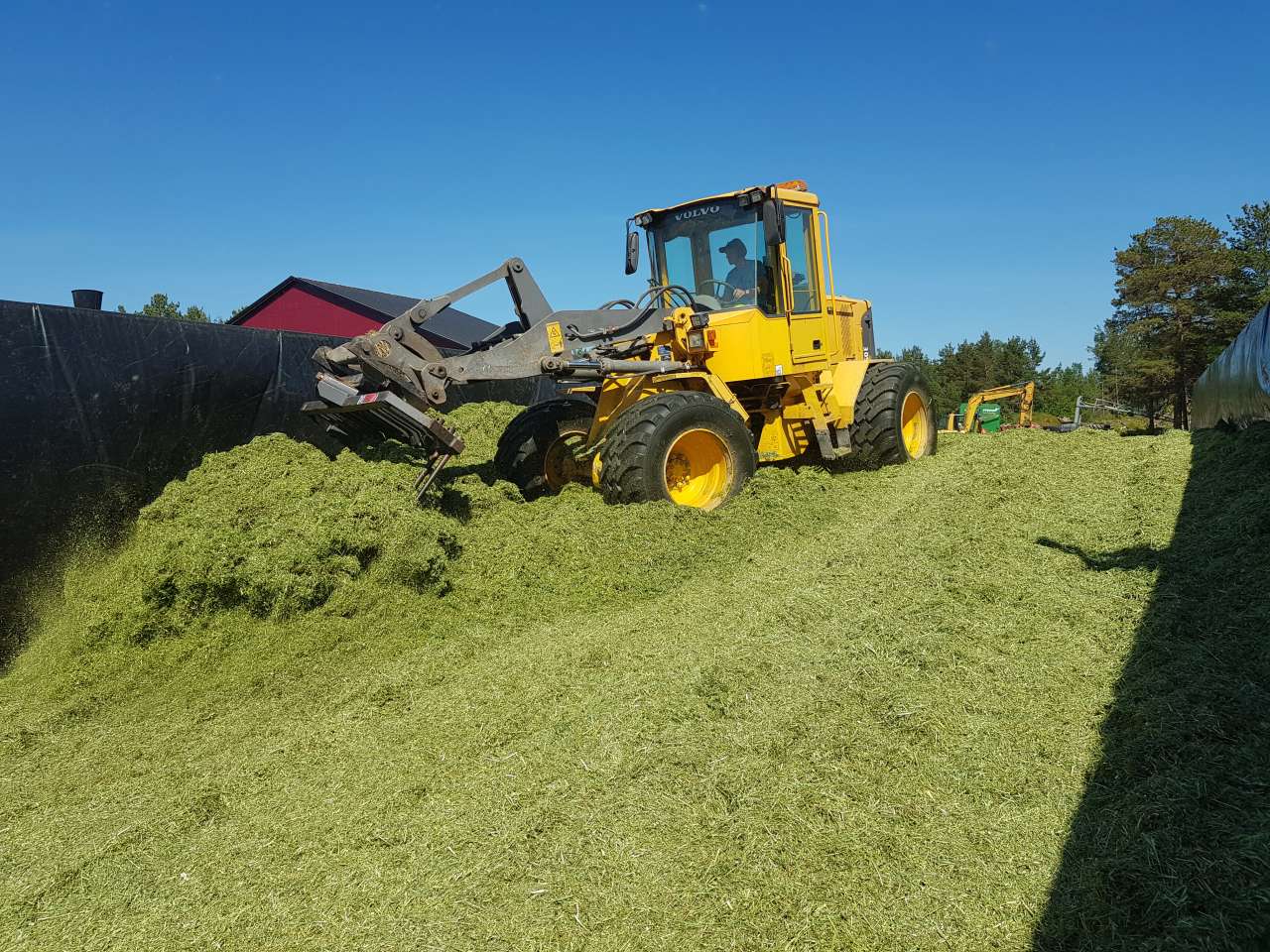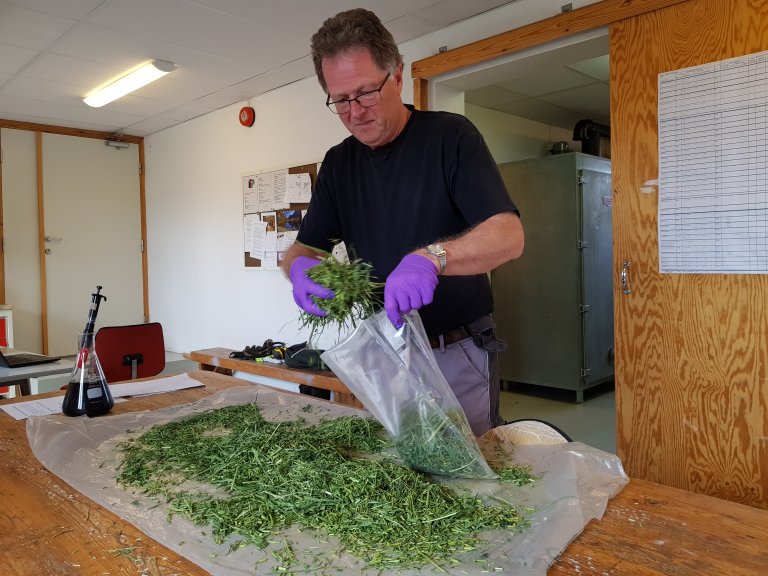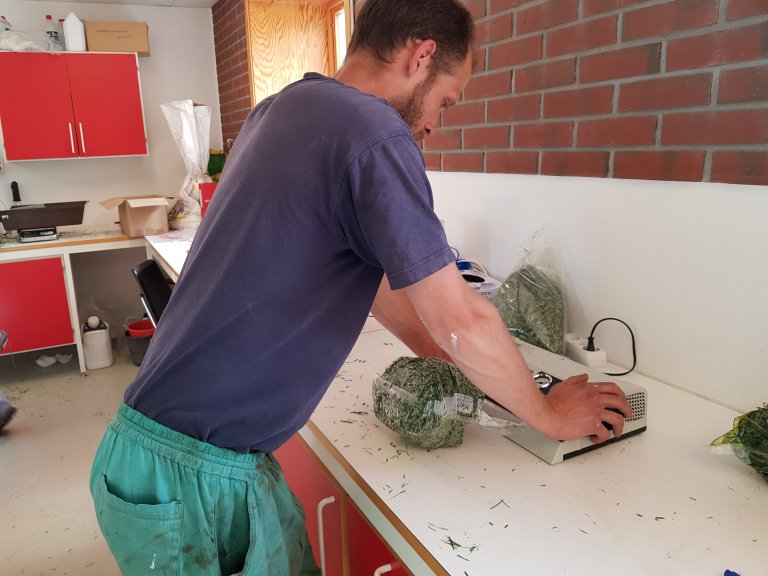Divisjon for matproduksjon og samfunn
Klimagrovfôr - Strategier i grassurfôrproduksjon for å redusere enterisk metanutslipp fra drøvtyggere

Slutt: juli 2023
Start: aug 2019
Overordna mål for prosjektet er å utvikle strategier i surfôrproduksjonen som reduserer enterisk metanutslipp hos drøvtyggere.


| Eksternt prosjektnettsted | Prosjektets nettside hos NMBU |
| Start- og sluttdato | 01.08.2019 - 31.07.2023 |
| Prosjektansvarlig, NIBIO | Ola Flaten |
| Divisjon | Divisjon for matproduksjon og samfunn |
| Avdeling | Fôr og husdyr |
Omtrent 2/3 av klimagassutslipp i norsk jordbruk kommer fra drøvtyggere, og hovedandelen av utslippet er metan fra fordøyelsen til drøvtyggerne. Grovfôr utgjør en stor andel av dyrenes fôrrasjon. Det er også et nasjonalt mål å øke grovfôrandelen og andel norskprodusert fôr i rasjonen til drøvtyggerne. Dermed vil det ha stor innvirkning på klimagassutslippene fra landbruket om en greier å avdekke egenskapene til et lavutslippsgrovfôr.
Grassurfôr, som er det dominerende grovfôret, blir produsert på mange ulike måter, noe som resulterer i stor variasjon i egenskaper ved surfôret. Det kan være botanisk sammensetning, fordøyelighet og gjæringskvalitet. Dette er egenskaper som påvirker metanutslipp fra dyra. Samtidig må dette være egenskaper som kan utnyttes til å redusere metanutslippene under både praktiske og økonomiske forhold.
NIBIO si rolle i prosjektet er:
- å teste effekten av engtype, slått, fortørkingsgrad og gjæringsmønster i surfôr på enterisk metanproduksjon. Det blir gjort ved å lage surfôr fra et feltforsøk og måle metanproduksjon fra surfôret i flasker tilsatt vomvæske fra mjølkekyr
- å bidra med planlegging og tolkning av resultater fra et fôringsforsøk med mjølkekyr der ulike surfôrtyper blir testa med hensyn på produksjon av mjølk og enterisk metan
- å gjøre en økonomisk- og miljømessig analyse av ulike tiltak i produksjon og utnytting av surfôr for å redusere enterisk metanutslipp fra mjølkeproduksjon
Publikasjoner i prosjektet
Forfattere
Kim Viggo Paulsen Weiby Sophie Julie Krizsan Ingjerd Dønnem Liv Østrem Margrete Eknæs Håvard SteinshamnSammendrag
Det er ikke registrert sammendrag
Forfattere
Kim Viggo Paulsen Weiby Sophie Julie Krizsan Margrete Eknæs Angela Dagmar Schwarm Anne Cathrine Whist Ingunn Schei Håvard Steinshamn Peter Lund Karen A. Beauchemin Ingjerd DønnemSammendrag
Det er ikke registrert sammendrag
